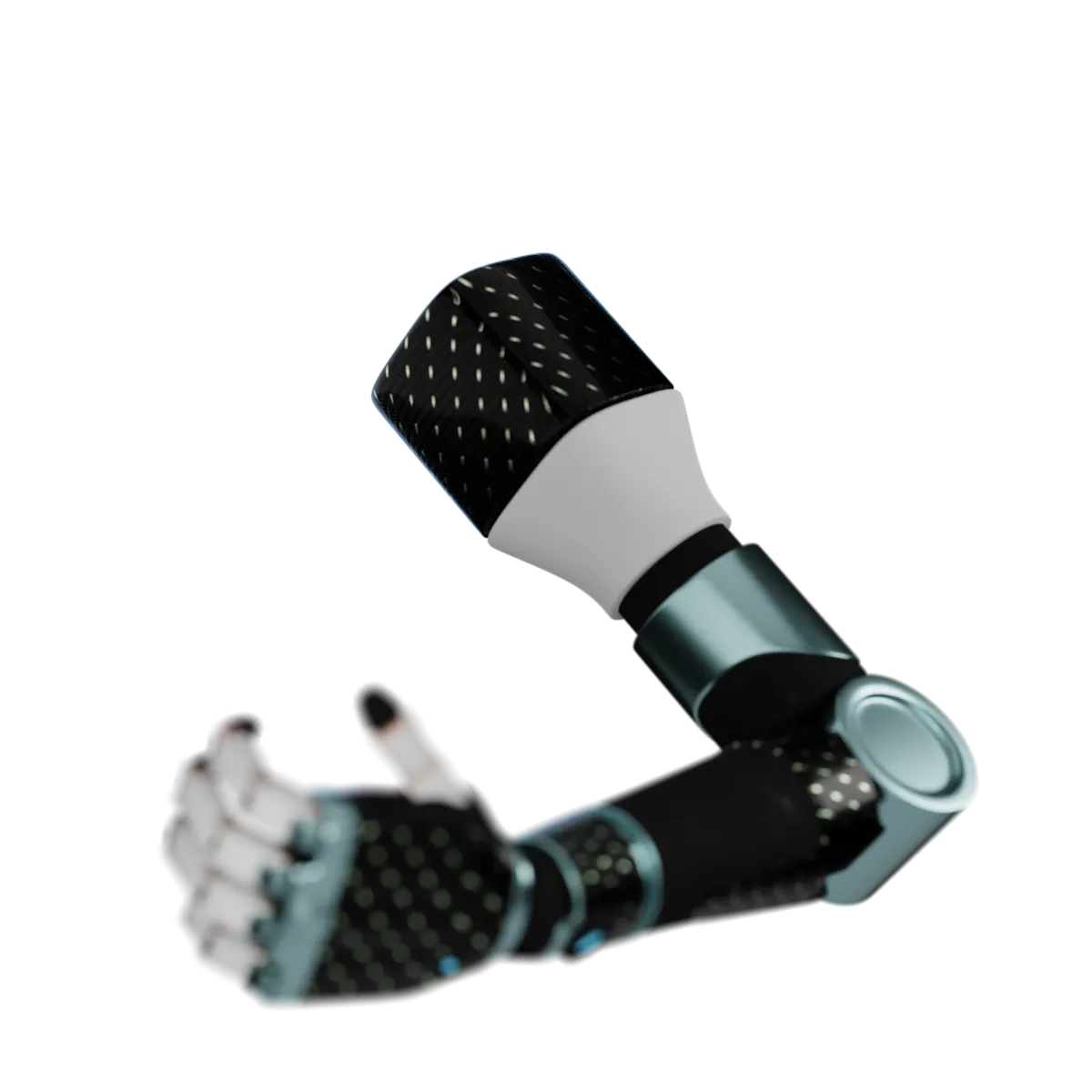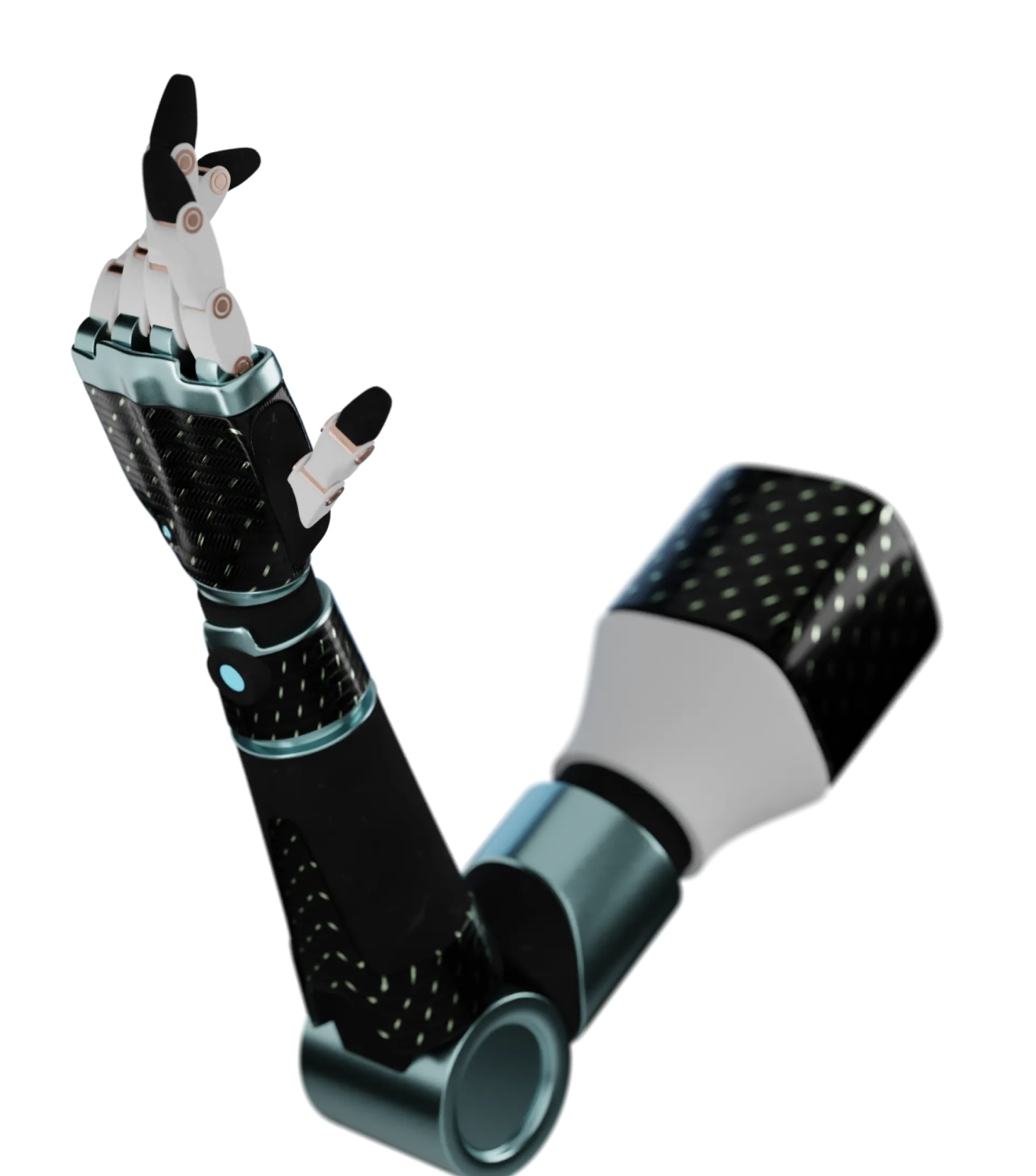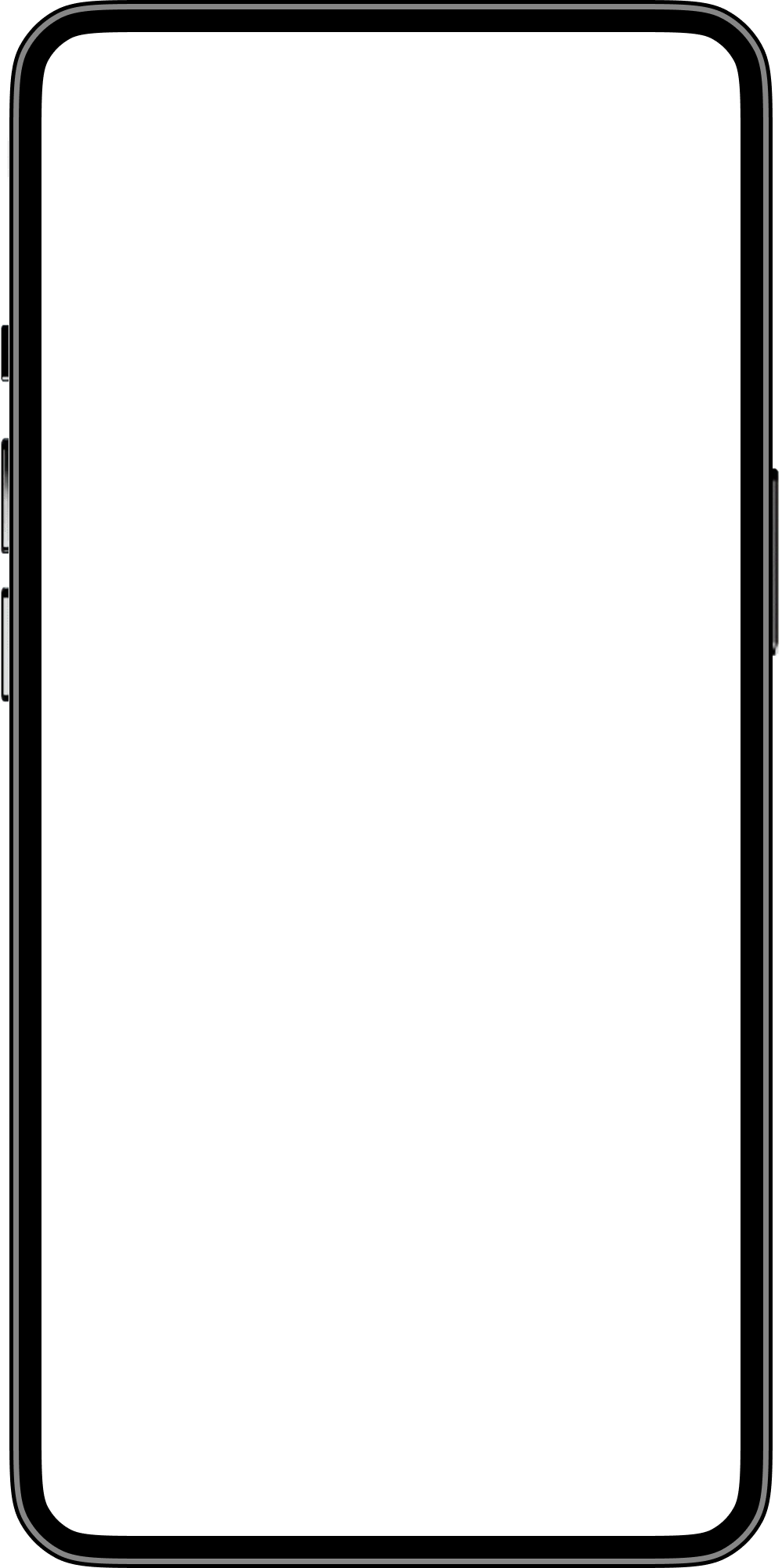make prosthetics accessible
to everyone
Get back to the freedom of limb movement and restore core body functions for self-care and work



Bionic prostheses are an effective and well-tested way to take over the functions of lost limbs
Prosthetic body parts had a long and exciting way of evolution to remove movement limits for people who suffered from diseases, traumas, accidents, or dangerous life situations. Until recently, prostheses were attached to the human body mechanically, and although they became increasingly sophisticated, it was impossible to connect them to the nervous system. So, it took much time and effort for the user to adapt and reach a high level of manipulation with their prosthetic limbs.
Scientists and engineers had to do a lot to make a revolutionary breakthrough and find a way to connect a mechanical limb with a person’s nervous system. With the new-age prostheses, a person is able to manipulate artificial limbs directly via brain signals, as happens in natural procedures. The nerve impulses are intercepted, analyzed, processed, and converted into appropriate movements — that’s the workflow of even more user-friendly, fine-tuned prosthetic limbs that enable people to get their freedom of movement back to the highest possible level. No doubt, massive effort should be invested into teaching people to use the technology, but the result is definitely worth it.
The most promising methods of controlling prostheses are applied to make them efficient
The manufacturing process for the prostheses is already well set up, but fine-tuning them and teaching the patients never stops
Product overview
CUTTING-EDGE IN BOTH DESIGN AND TECHNOLOGY
THE MOVEMENT SNOW COME EASILY AND LOOK NATURAL
THE MOST LIFELIKE BIONIC HAND
ESPECIALLY FOR YOUR BODY OR ACTIVITY TYPE
The mobile app to make setup and usage easy

Flexible setting of functions
Battery charge monitoring
Prosthesis activity statistics

The manufacturing process for the prostheses is already well set up, but fine-tuning them and teaching the patients never stops.
General uses of hand prostheses by technology
These data may help to better understand the variability of technologies that prosthetic arms can provide.

These data may help to better understand the variability of technologies that prosthetic arms can provide.
Prostheses that use muscle signals transmitted through electrodes on the surface of the skin to control the movements of the prosthesis.
prostheses
These are prostheses that use advanced robotic technologies, such as motors, pressure sensors, gyroscopes, and others, to implement complex movements and functions.
Electrodes are embedded internally in the prosthesis, and they interact with the muscles by measuring the electrical signals that occur when the muscles contract.
These are simple prostheses made of metal or plastic materials that use mechanical mechanisms such as rubber straps, brackets, levers and others to provide mobility and functionality of the prosthesis.
